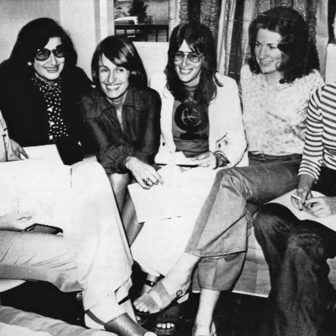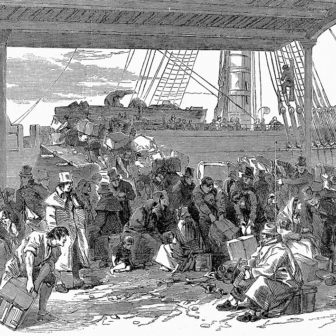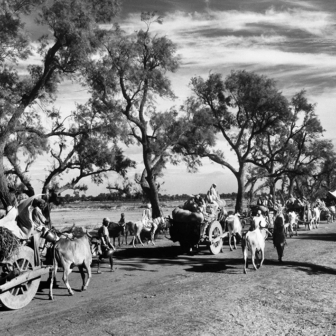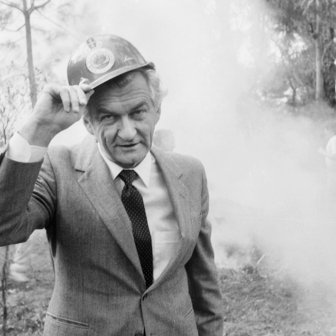An Uncertain Glory: India and Its Contradictions
By Jean Drèze and Amartya Sen | Allen Lane | $39.99
JEAN DRÈZE and Amartya Sen are a dynamic duo, legends in their own time. Sen, seventy-nine, is the Nobel Prize–winning economist with roots deep in Bengal who lives most of the year among the world’s movers and shakers in North America and Europe. Drèze, fifty-four, is the put-your-money-where-your-mouth-is Belgian who took Indian citizenship and travels the country constantly as a scholar-activist, an economist-without-borders. They’ve collaborated for years, and in this book they offer a tract for the times, a 434-page, richly researched, red-flag-waving wake-up call for India.
The astute title, An Uncertain Glory, nails their colours to the mast. There is a sort of glory about today’s India. Its existence and endurance are gloriously improbable. India is the world in microcosm, yet with a single government holding the place together. That government mitigates the tensions that arise among 1.2 billion people practising all the world’s great religions (a little thin on Judaism, but it’s present nonetheless), speaking twenty-two official languages written in eleven different scripts, and divided not merely by wealth but by stubbornly resilient ideas of “caste.” Is this what global government might look like?
At its best, the Indian state espouses — and occasionally manages to practise — humane, rational and egalitarian policies. Its Election Commission is a model. If the world were a fair place and elections were run even-handedly and efficiently, US elections would be contracted out as an aid-to-America project run by the Election Commission of India. Its superior courts can be bold and independent. Its media world of 800 television channels and 160 million newspapers printed every morning is unique for its diversity and freedom. (Don’t take seriously the ridiculous Index of Press Freedom that recently ranked Burkina Faso more than ninety places higher than India.)
None of this, however, puts food in stomachs, combats disease or teaches children. The “uncertainty” of anything glorious about today’s India stems from its dismal record in improving the lot of vast numbers of its people. In the past twenty years, “nutrient levels… have decreased” — those are Drèze and Sen’s italics — for the population as a whole.
The authors emphasise two points they want readers to remember amid the gloomy record. First, India needs economic growth, expansion and capital, and it needs social development; and both need to be guided by a capable state. Second, India needs democracy, and it needs to use more effectively the opportunities that democracy provides. In 1959–62, an estimated thirty million people died in the Chinese famine; in the Indian food crisis of 1965–66, there was dearth, but people didn’t eat grass and starve by the roadside. A free press, Sen has argued previously, alerted and energised governments.
In spite of impressive economic growth over the past twenty years, however, the overall record of the Indian state is maddeningly poor when compared with many ex-colonial countries. In providing nutrition to children, for example, India has a poorer record than Bangladesh and the countries of sub-Saharan Africa. More than 40 per cent of Indian children under five are underweight, according to the World Health Organization; the proportion in sub-Saharan Africa is 25 per cent. “Many gender-related indicators are now much better in Bangladesh than in India,” report Drèze and Sen. Fifty per cent of Indian households don’t have toilets; more than 90 per cent of Bangladeshi households do. Comparisons likes these go on for thirty-five pages.
The book’s five middle chapters are its core. Each analyses an area in which the Indian state has failed to provide the great leaps forward that would lift hundreds of millions of people to decent levels of nutrition, health, education, shelter and human equality under honest, effective government.
At the centre of all this is government. Drèze and Sen argue that India needs public enterprises, but they need to be efficiently and honestly run, which they’re not at the moment. Electric power is poorly distributed and stolen from its transmission lines; in some states, bills go unpaid; farmers, especially well-off ones, get electricity for nothing, and they also get subsidised fertilisers for their fields and subsidised diesel fuel for their vehicles and water pumps. In fact, subsidies for the prosperous cost the exchequer more than US$90 billion in 2011–12, or 5 per cent of India’s GDP.
Corruption, which “has become… an endemic feature of Indian administration and commercial life,” helps to explain why institutions don’t do what they are set up to do. Drèze and Sen see some progress here. A Right to Information Act makes it easier to bring corruption to light, and modern media — cell phones, for example — make it easier to publicise and shame corrupt people. However, “the third front — effective prosecution” — is where little progress is made. Crooks beat the rap too often and easily.
In education and health, relatively small elites have looked after themselves. Today, they take their illnesses to an increasingly privatised health system. The public system, on which the vast majority depend when they are not relying on quacks, crumbles. Primary education in many of India’s states is pathetic. In a survey of educational attainment among fifteen-year-olds in seventy-four countries, India finished at the bottom with Kyrgyzstan. But India has excellent institutes of management and technology and some outstanding liberal arts colleges.
Drèze and Sen argue in favour of a universal system of subsidised food, as opposed to “targeting” of poor people. They are sceptical of plans to replace subsidised food with cash payments to the poor. Attempts to define a poverty line, they argue, are so arbitrary that millions of people get left out. And even with a rags-and-rumbling-stomachs definition of where poverty begins, 350 million people would have qualified as BPL (Below the Poverty Line) in 2010. The authors’ advocacy of universal access to subsidised food, and of the national program that entitles any Indian to one hundred days of work each year at a low basic wage, is not surprising. Drèze has been involved in the evolution of both schemes. His advocacy has to be respected because he researches relentlessly in rural India.
The authors acknowledge that “caste” makes India different from other places. Inequality exists everywhere, they write, but India “has a unique cocktail of lethal divisions and disparities.” In spite of sixty years of affirmative action to bring equality to the most disadvantaged groups (the so-called Scheduled Castes and Scheduled Tribes), “caste continues to be an important instrument of power in Indian society” and reinforces disadvantages that come with gender and poverty.
India’s higher castes constitute no more than 25 per cent of the population, but they overwhelmingly dominate elite occupations. Drèze’s survey of organisations in the city of Allahabad in north India found that the leaders of everything from the police and trade unions to newspapers, justice institutions and universities were 75 per cent from these upper castes.
And running through these tales of disparity is the fact that girls and women fare worse than boys and men — in nutrition, education, wages, health and safety. One estimate puts the number of abortions of girl babies at between 300,000 and 600,000 a year.
WHY is a country that produces global sophisticates like writer Amitav Ghosh, prime minister Manmohan Singh and conductor Zubin Mehta unable to improve the lives of hundreds of millions of its people?
As their final chapter (“The Need for Impatience”) suggests, Drèze and Sen want to know, too, because time may be running out. They don’t say it in so many words, but implicit in what they write is a sense that the glaring inequalities of India cannot persist forever without some profound upheaval. As they put it, “The enormity of the social division… makes it much harder to use the normal tools of democracy… to confront the inequalities involved.”
They don’t suggest for a moment that political revolt is in prospect. India’s “Maoist movement” gets only three entries in the index. Indeed, “underprivileged Indians are reluctant to rise and demand a rapid and definitive removal of their extraordinary deprivation.” But behind the sorry tales they recount lurks the question, “How long can this go on?”
Drèze and Sen don’t suggest what sorts of upheavals might lie ahead. But globalisation is rapidly breaking down the deference and isolation that once kept poor and lowly people obsequious, ignorant and disconnected in the countryside. Increasing urban desperation and lawlessness are one possible outcome. Another possibility is major disaster brought on by ecological degradation or epidemic disease. A more appealing prospect is that the poor will organise and use the tools of democracy, as they have to a certain extent in some Indian states, to make constructive change happen.
Drèze and Sen argue that change is possible. Their book, indeed, is intended to accelerate a process — “public reasoning,” they call it — that puts hideous disparity and unfairness in front of India’s middle classes and power-holders every day. Relentless recognition and discussion, they contend, are essential to goad politicians and policy-makers to follow through on programs that have produced creditable social achievements in other countries and in a few regions of India.
It is clear that some of India’s states have done better than others in providing tolerable standards of life. Kerala and Tamil Nadu, the two most southern states, lead on most indicators of education, health and poverty alleviation. Do they have recipes that can readily be applied elsewhere?
The answer, regrettably, is no. The similarity between Kerala and Tamil Nadu is that both have had vigorous two-party political systems for more than fifty years. Well-organised, competitive political parties, driven by motivated workers, strive to deliver tangible benefits to voters. They know that if they don’t, voters will punish them by electing their well-organised, hyper-critical, desperate-to-be-back-in-power rivals at the next opportunity. The state of Kerala has only re-elected a government once in its history (and that was a special circumstance after Indira Gandhi’s 1975–77 “emergency”). Tamil Nadu has had ferocious two-party politics since independence.
But the political systems of Kerala and Tamil Nadu grew out of their own cultural soil. You can’t conjure up meaningful political organisations by waving a report from the World Bank.
This sobering book, with its thirty tables and eighty pages of notes and appendices, has the marks of diligent, able research assistants clawing together material. Readers may hanker after a little more Drèze and Sen and a little less United Nations report. One craves the telling anecdote or vivid experience that hammers home key points and makes them memorable.
The book would also have benefited from more attention from the publishers. The tables are not indexed in a single list, so the reader who wants to find a particular one must burrow page by page to find it. And though there is a map, it is buried in chapter eight, and it is intended only to show state disparities in the ratio of men to women. Since interstate comparison is a central aspect of the book, a little more effort in map-making would have given impact to some of the arguments.
Drèze and Sen take heart from Adam Smith’s assertion that if people can get into bad habits, they can also be guided by good ones. The hope for change must come from a number of sources: reform of administration and detection of corruption; more effective incentives for abiding by the law; legal reform; expanding the Right to Information Act; and “investigative journalism” that relentlessly exposes wrongdoing and inequity.
Drèze and Sen argue that many of the conditions for change already exist — the Right to Information Act, vigorous media, honest judges and durable political organisations in some states. One of the keys, in their view, is more effective use of these conditions. Media need to shed their “bias and selective focus — playing up some issues and events while ignoring others.” Something like that, they suggest, is what occurred in Kerala and Tamil Nadu: inequity was thrust in front of most people’s noses every day from the 1940s. In a democratic India, “public reasoning and social action” have the potential, they assert, to make the needs of “so many people” an inescapable issue of discussion and constant action. •




